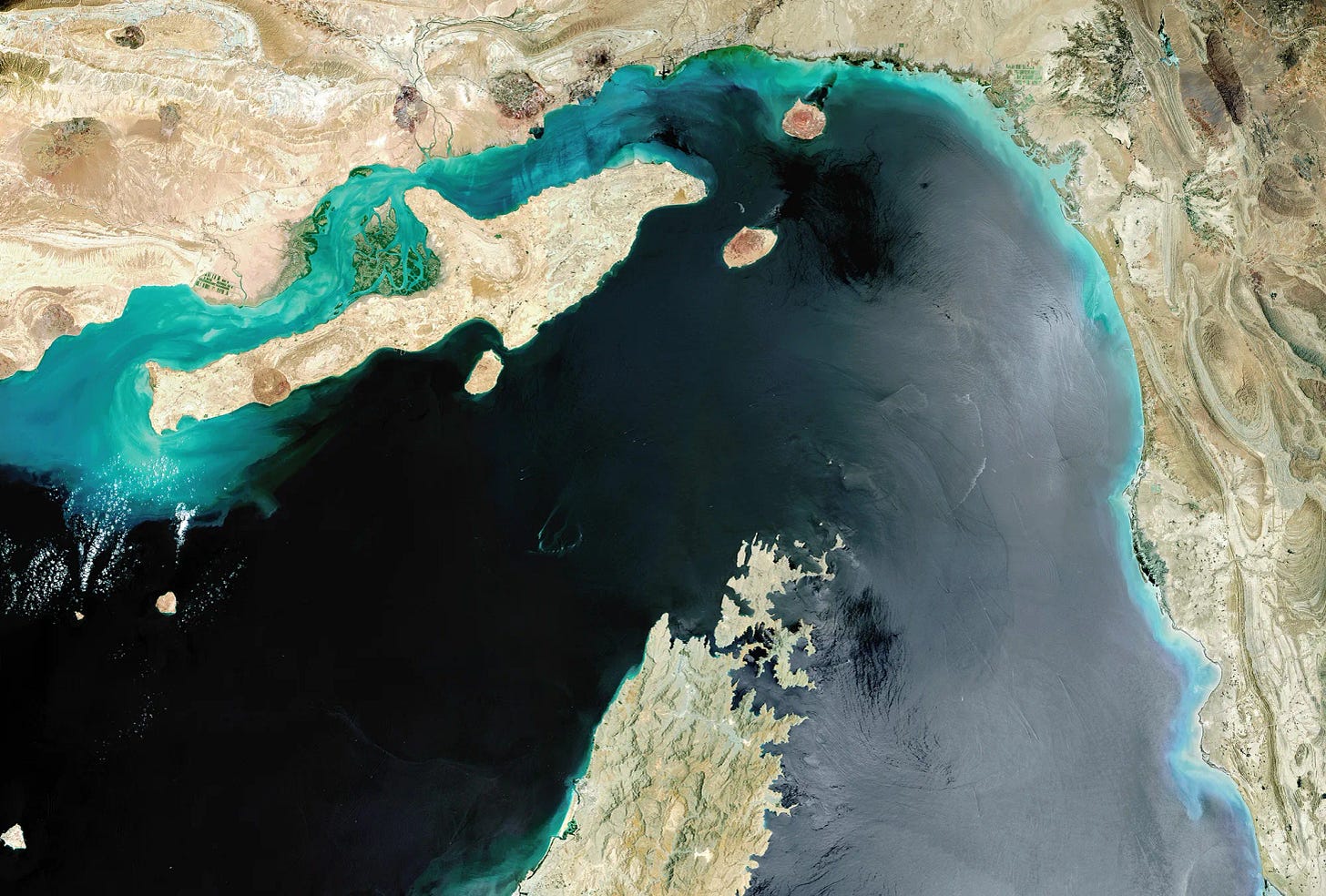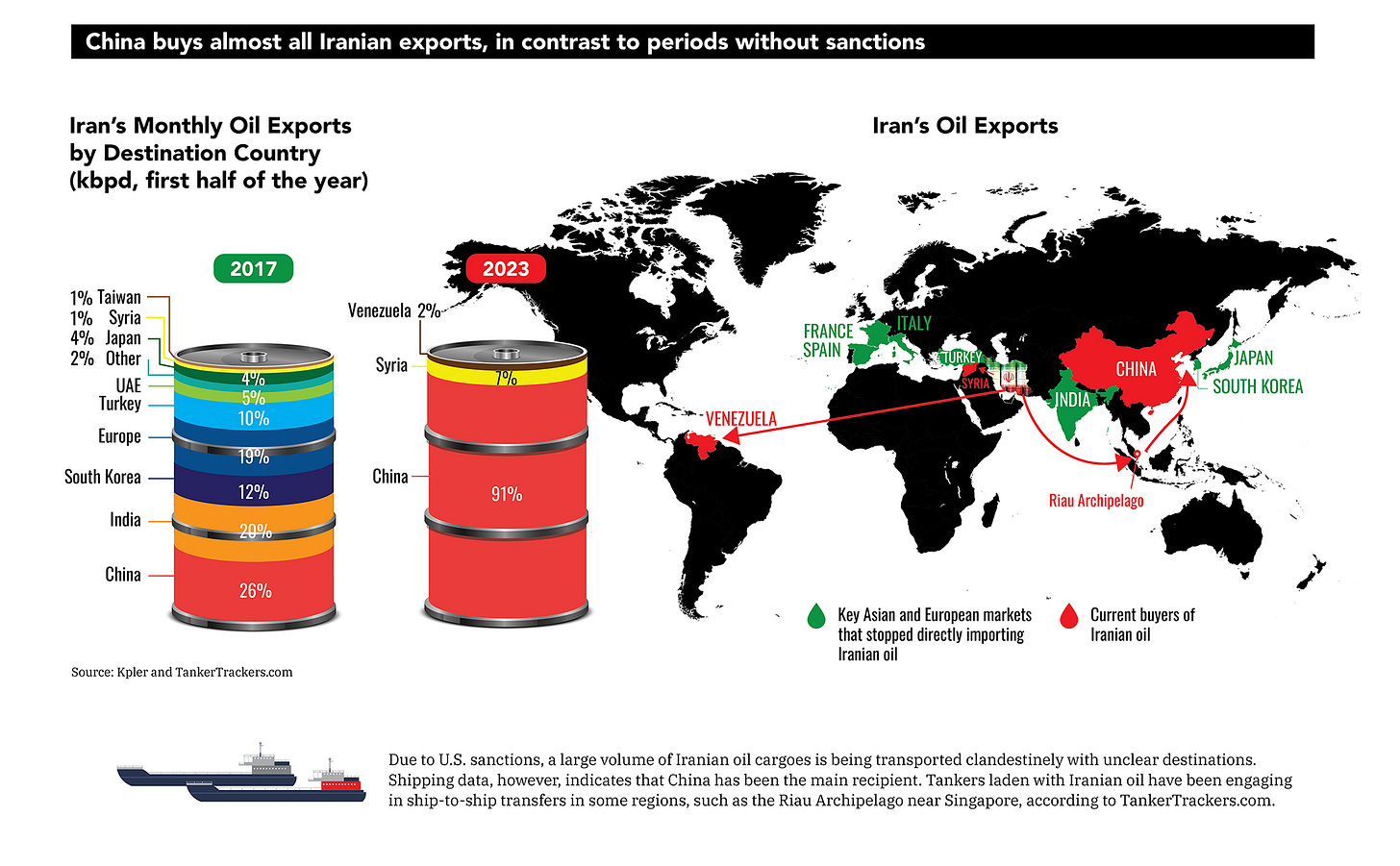Oil Chokepoint Intact
A full closure of the Strait of Hormuz is highly unlikely.
Iran often threatens to close the Strait of Hormuz—a critical chokepoint for global oil and gas shipments—especially during periods of heightened tension, like we are seeing at the moment with Israel and the West.
The implications of closing the narrow waterway between Iran and Oman, where roughly 20% of global oil and a large portion of LNG exports pass through it daily, are severe. Naturally, the tensions over the past week and price action in commodities have built in some premium based on this fear.
However, closing it is highly unlikely for several strategic and economic reasons.
The Economic Vitality of the Strait
The Strait is one of the most strategically vital waterways in the world, especially for the global energy market. It serves as the only sea passage from the Persian Gulf to the open ocean, making it a critical transit route for oil, LNG, and other commodities exported by Gulf countries.
As we’ve already mentioned, roughly 20% of the world’s oil supply (about 17 to 18 million barrels per day) passes through the strait, including exports from major producers like Saudi Arabia, Iraq, the United Arab Emirates, and Kuwait. It is also a key channel for nearly all of Qatar’s LNG exports, making it essential to the energy security of Asia and Europe.
In addition to hydrocarbons, the Strait also facilitates the transport of refined fuels, petrochemicals, and dry bulk cargoes. Because most of these nations have limited alternative export routes, any disruption in the Strait of Hormuz causes big problems.
At its narrowest point, the strait is only about 21m (33km) wide, but the actual shipping lanes in each direction are just two miles wide, separated by a two-mile buffer zone. This makes it a natural chokepoint—easily monitored, easily threatened, and difficult to reroute around.
Why Iran Won’t Close It
Closing the Strait would amount to economic self-destruction for Iran because it would sever one of its own most vital lifelines: oil and gas exports.
Despite facing heavy Western sanctions, Iran still relies heavily on crude oil sales. The only thing that has changed for exports in recent years isn’t so much the volume, but rather the destination:
The exported commodities support its economy, government budget, and basic imports such as food and medicine. The Strait of Hormuz is the only maritime route through which Iran can export most of its oil and import many critical goods. Shutting it down would not only block the oil exports of its regional rivals like Saudi Arabia and the UAE, but also its own, essentially cutting off its primary source of income.
Additionally, such a move would almost certainly result in a major international backlash, and not just from the US.
Blocking it would be seen as an act of war against the global economy. It would likely trigger the loss of support from economic partners like China and Russia, which depend on Gulf energy flows.
Also, let’s not forget that even if Iran does try to blockade the Strait, any action would likely be very short-lived. For example, the US maintains a significant military presence in the region, including the Fifth Fleet in Bahrain. It could quickly counter mine-laying or blockades, meaning that any negative impact on markets would be short-lived.
Risk Still On The Table
For shipping operators and macro traders, the channel still carries risk, even if the probability of closing it is very slim. If the past is anything to go by, Iran will rely on asymmetric and deniable tactics. In doing so, it can still disrupt shipping and exert geopolitical pressure without triggering a global conflict (whether we are currently in one is another question).
One area of focus right now is signal jamming. This involves deliberately transmitting radio frequencies to disrupt, block, or confuse communication and navigation signals. This can make it harder for ships to navigate, call for help, or report incidents in real time.
Another method involves the harassment of commercial tankers, often under the pretext of maritime violations or tit-for-tat responses to Western actions. These seizures are usually highly visible and designed to send a message, while stopping short of full closure.
Iran has also been linked to limpet mine attacks on oil tankers, which damage vessels without sinking them, intended to cause disruption, raise insurance costs, and create uncertainty in energy markets.





